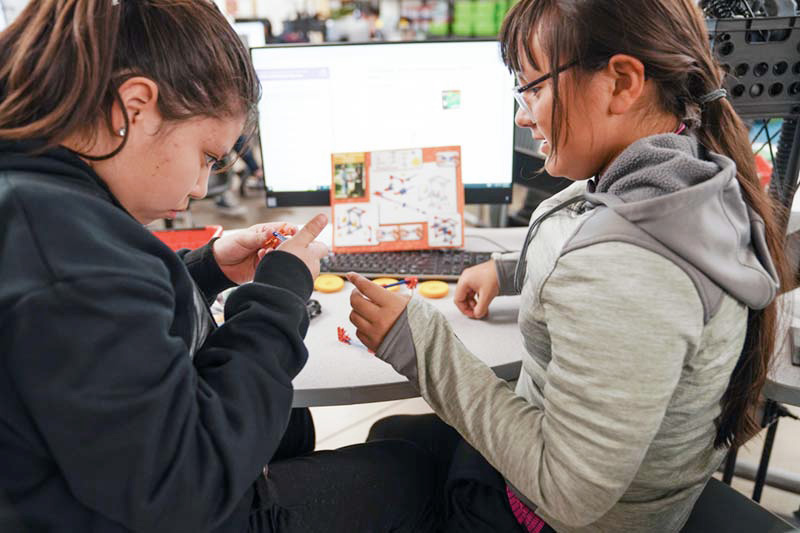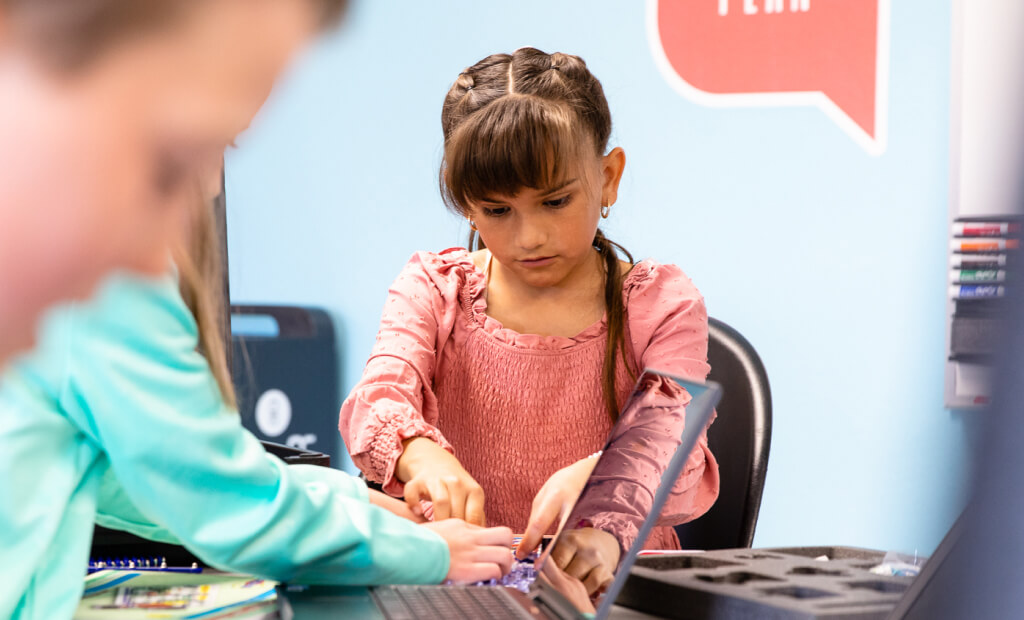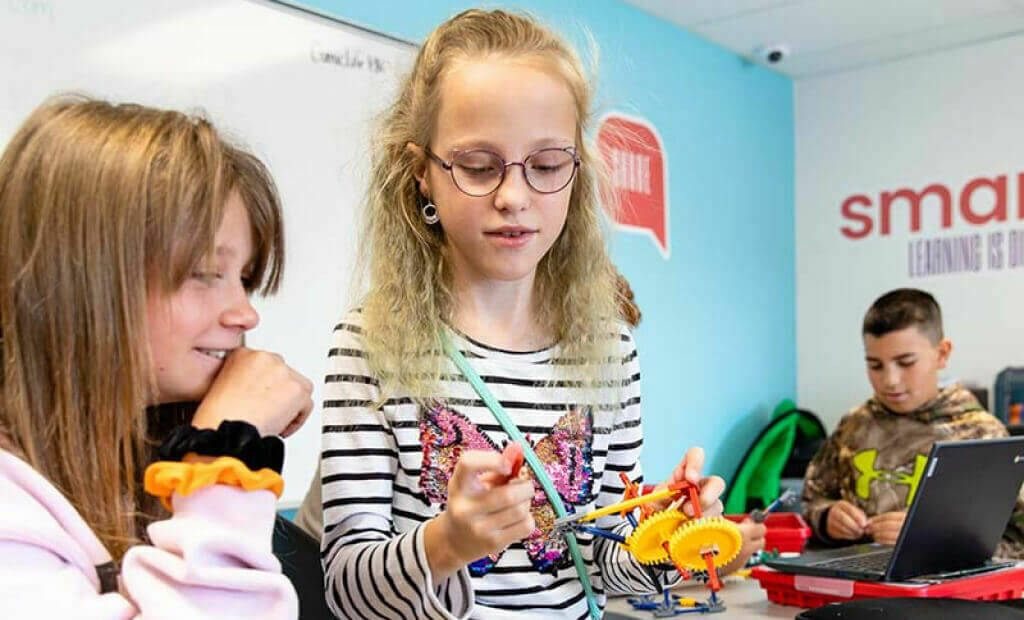The Benefits of STEM Education: Challenges, Case Studies, and Success Stories
The combined disciplines of science, technology, engineering, and mathematics (STEM) in education are at the forefront of major initiatives for schools and educational institutions throughout the United States. Organizations such as The STEM Alliance and The National Math + Science Initiative offer programs and services to support STEM, with the aim to help students “succeed in a rapidly changing world driven by technology and innovation.”
The U.S. Department of Education’s Raise the Bar: STEM Excellence for All Students initiative brings together over 90 public and private sector organizations to enhance STEM education nationwide, and for good reason: While the U.S. ranks just above the global average in science literacy for elementary and secondary students, it lags behind in mathematics — ranking 25th out of 37 countries.
Unfortunately, the reason STEM education initiatives remain a high priority are the myriad challenges that schools and districts continue to face in delivering quality education. From high costs, to lack of teacher training, to challenges of equity and accessibility, we still have a ways to go in bringing the benefits of a STEM education to all students. In this blog we’ll take a look at these major challenges, how some schools have overcome them, and the major benefits we can provide to learners when we succeed.
STEM vs. STEAM vs. STREAM
Before we move forward, let’s settle a bit of a debate. STEM itself is meant to be a comprehensive approach to the instruction of science, technology, engineering, and math where instead of teaching each subject separately, educators try to incorporate some or all elements into every lesson or project.
There is also an approach that incorporates the arts to the mix, referred to as STEAM, which can include content ranging from fine art and performance art to photography and English literature. And there is also STREAM, which adds reading and writing as integrated elements.
There is a concern that the STEAM and STREAM approaches may dilute the intent of STEM, which is to promote the specific importance of science, technology, engineering, and math. However, regardless of the acronym used, we believe that language arts, social studies, and fine arts provide critical relevancy to STEM, and through these connections, we can generate a broader interest in STEM.
So when we talk about STEM education, we’re discussing an integrated, project-based approach that best prepares young learners for what they’ll likely experience in the workplace.
Challenges in Implementing STEM
Every school and instructor faces obstacles when trying to implement STEM — some more challenging than others. Understanding these challenges is important if we’re to enact feasible solutions. If you as an educator are having difficulty bringing STEM education to your students, you are not alone. The silver lining is that fellow educators have found ways around those challenges, and their approach may provide you with ideas on how to move forward.
- Cost. Everything about STEM costs money, whether it’s paying and training instructors or purchasing supplies and technology. That means a lack of funds can completely undercut a school’s STEM initiatives. This is especially true for high-poverty schools in poorer districts — schools in over half of U.S. states get fewer dollars per student than the national average, some more than $3,000 below the average. This lack of funding hampers a school’s ability to purchase equipment, tools, and supplies or to hire and train teachers to teach STEM courses. This hits especially hard in public schools, which, according to an NCES survey, had experienced either one outstanding teaching vacancy (18%) or multiple teaching vacancies (26%) as of October 2022. Funding is essential for schools to obtain the necessary equipment and qualified instructors to achieve STEM learning goals. The issue of cost also has an amplifying effect on the other challenges.
- Established standards. When schools lack established standards for their technology and engineering programs it makes it challenging to create a curriculum for learners that meets national and state educational standards. Curriculum development needs to ensure that the STEM curriculum actually sequences critical skills and isn’t just acting as a makerspace playground. At the same time, the pedagogy has to account for and support STEM goals. Instructors and facilitators need to work with school administrators and policymakers to ensure that there’s direction and oversight in how STEM is supported across all grade levels. At the individual class level, instructors have to consider which approach aligns best with their available resources and goals. For example, would direct instruction help produce the intended learning results, or would a constructivist approach work better to appeal to student curiosity and meet them where they are? The answer may depend on context, but must align with established standards.
- Teacher certification. Not every instructor has the background necessary to teach a STEM course, and the need for instructors far outweighs the supply. Professional development and support are necessary to provide teachers with the training and experience to teach STEM concepts like computer science and engineering. Even for skilled instructors with extensive backgrounds in science or engineering, the state of STEM is constantly changing, so there’s a continuous need for professional development and training.
- Course sustainability. The concern about training isn’t just about the quality of the education, but whether the STEM courses are sustainable. A single instructor or small group could successfully champion a school’s STEM programs, but what happens when they leave? The reality is that life and circumstances change and so teachers don’t always stay in one place for long. When there’s difficulty in training replacement teachers, then the initial vision won’t survive their departure. Learners shouldn’t have to stop and start over from step one every time a new facilitator comes in. It’s necessary that schools create an environment where teachers who aren’t necessarily from a STEM background are able to walk into an established classroom and pick things right up.
- Consistency across grade levels. In order for STEM initiatives to work for learners, there needs to be an alignment across grade levels — from elementary to middle to high school — that is clear and effective. Every grade needs to create a space that supports STEM-specific learning that builds on what came before. Just like any other core topic, STEM education starts with a strong foundation. For example, in elementary school learners are introduced to basic concepts; middle school covers more complex approaches to those topics; and high school learners are asked to achieve an almost expert-level understanding. Rather than thinking of robotics or coding or engineering as things you can only attain at the high school level, the basic principles should be introduced as early as possible.
- Lack of equity. Unfortunately, we’re still seeing a lack of representation of African-American, Hispanic, Native American, and female students in STEM fields and in the teacher workforce. For example, in 2021, while women made up half (51%) of the total U.S. population they only comprised a third (35%) of the people employed in STEM occupations. At the same time Black and Hispanic workers remain underrepresented in the STEM workforce. Working to increase the presence of underrepresented groups in STEM isn’t only a matter of justice and equity; increased representation and diversity provides real benefits for these professionals’ peers, the companies they work for, and the country as a whole. Equity in STEM also applies to students with different abilities, whether they have dyslexia, are on the spectrum for autism, experience high anxiety, or have other learning challenges. STEM courses open up opportunities for students with special needs over other Individualized Education Plans (IEPs) that schools may have in place — but there has to be a plan in place for teachers to recognize and accommodate different needs.
STEM Success Stories and Case Studies
So, how can schools meet these challenges? Here are some tips and advice for success along with a few select case studies of schools that successfully brought STEM to their learners.
Tips for success
- Let’s start by addressing the funding issue. It’s important to reach out to different areas of the community to try to secure buy-in from those who can provide financial support. Finding funding opportunities isn’t easy, but there are STEM initiatives that offer funding and other grant opportunities. Visit our State Funding Pages to see where we’ve already helped make an impact for schools by aligning project-based learning (PBL) with a STEM focus.
- Focusing on PBL is a highly effective way to introduce students to STEM education — even if you don’t have the latest resources. According to a study published in the Journal of STEM Education, students who participate in hands-on, project-based learning are more likely to engage in STEM subjects and better understand the material. Other studies show that project-based learning experiences with a STEM focus can achieve greater equity by improving student outcomes across racial and socio-economic demographics.
- Look for professional development and training programs for instructors to build their skills and stay current on what’s happening in STEM. Schools should look to create a comfortable training environment for their instructors, find ways to pair instructors with others who excel at teaching STEM, and consider how to closely link professional development content to their everyday activities.
- If you aren’t sure about which steps to take, take a look at what other, larger districts in your state are doing. Reach out to them and ask questions — What are they doing to implement STEM education? Is it effective? Are they having difficulties? How does it tie into standards? Search for ways to hold up other schools as a possible mirror to see how you’re similar and distinct. Which of their initiatives can you replicate and in what other ways will you need to take a different approach?
Case studies
- How to bring STEM learning to areas without access. For many rural students, STEM courses are not a matter of choice, but a matter of access. Read the full case study to see how the North Dakota Center for Distance Education (NDCDE) was able to offer turnkey solutions at a lower cost so that every school across the state could have access to a SmartLab and the benefits of a STEM curriculum.
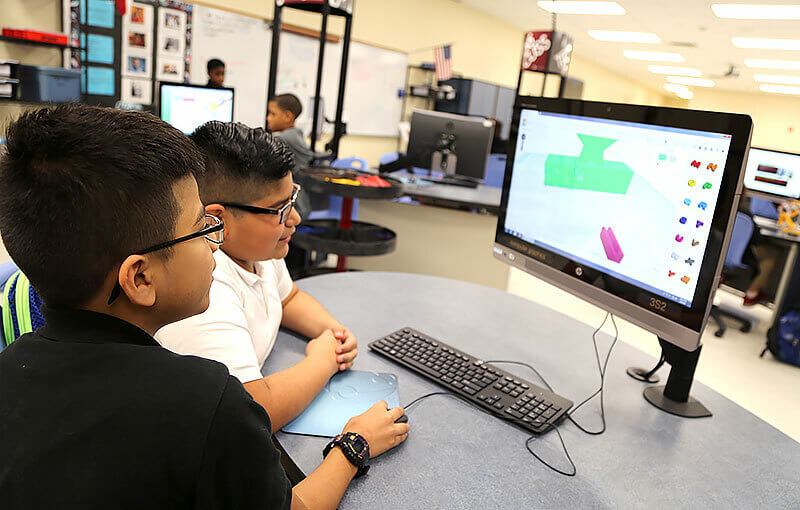
- How STEM helps to improve student performance, teach essential skills, and boost enrollment. As a magnet school, Jewell Austen Academy is invested in providing the best possible education for its students as well as increasing enrollment. Read the full case study to see how, thanks to the integration of a SmartLab into its STEM program, the school has been able to better reach students with behavioral issues, teach valued life skills, and increase enrollment.
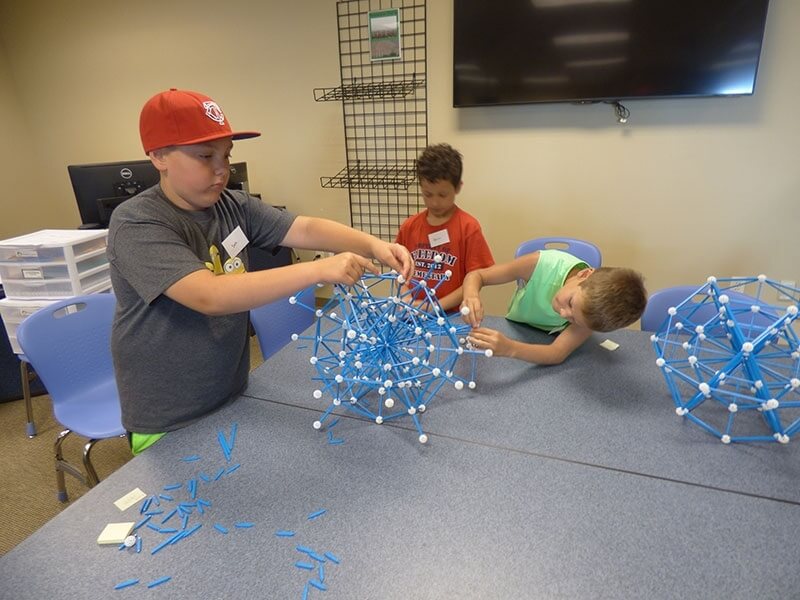
- How instructors can adjust to being facilitators for PBL in STEM courses. Denver Academy wanted to provide its student body of diverse learners with experiences where they could work in a project-oriented, technology-rich environment. Their success required some adjustments on the parts of the students and the instructor. Read the full case study for tips on how to adjust teaching styles to engage students and keep the STEM course running smoothly.
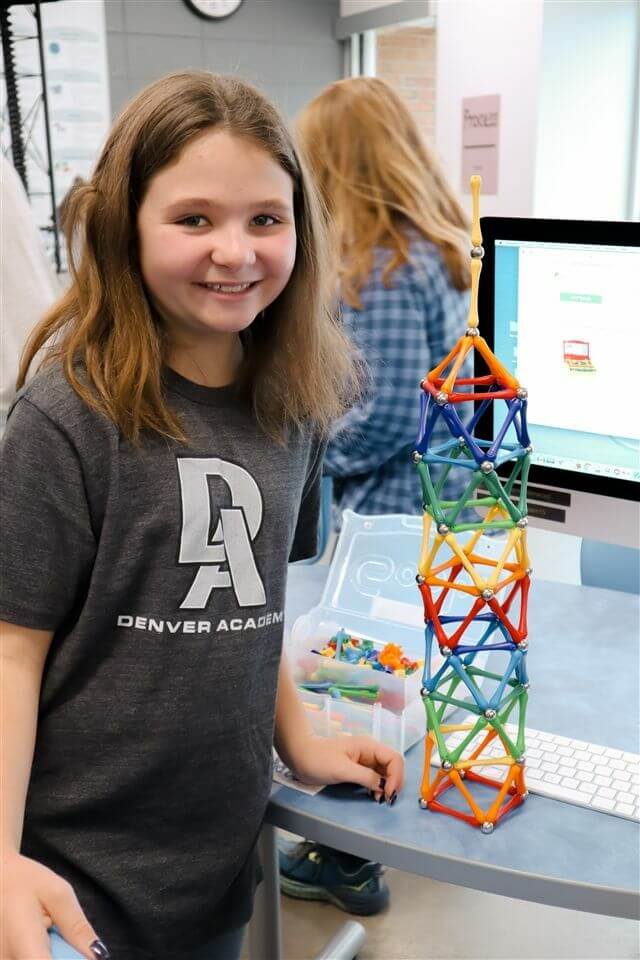
“Our district’s ability to go from limited or inconsistent STEM instruction to fully operational labs with consistent curriculum across all of our elementary schools has been a phenomenal transformation. SmartLab Learning’s turnkey solutions allowed us to move quickly to implement a district-wide STEM program, which meant the students weren’t waiting 3–5 years for us to decide what STEM would look like in our buildings. The SmartLab Learning solutions plus the professional development allowed our students to be actively engaged in project-based learning immediately. Now, our students are problem-solving through creative and collaborative learning each day. These skills are relevant today and will be imperative for our students’ future success and the success of our district-wide programming goals.” – Bryan Frazier, Superintendent, Claremore Public Schools | Public | Claremore, OK
Looking for additional STEM resources for your school or district? See our companion post on popular tools, technology, and curriculum for STEM programs.
Benefits of Investing in STEM Education
The benefits of STEM education are so important because, not only do they prepare students for 21st century careers, they assist in developing essential skills that they can use beyond the classroom. These are the reasons why it is so important to incorporate STEM in the classroom:
- Fosters critical thinking and problem-solving skills. STEM education helps learners develop critical thinking and problem-solving skills, which are essential for enabling them to think creatively and independently and apply complex concepts and ideas.
- Ties into hands-on and project-based learning. Hands-on learning and project-based learning provide a different way to engage students, which can increase their excitement about the subject and offer a new way for them to think about their education.
- Supports ingenuity and creativity. Much of STEM work requires risk-taking and experimentation, which are a core part of developing novel solutions to problems. Asking learners to discover their own solutions in project-based learning strengthens their creativity and provides them with the space to be inventive.
- Encourages the development of collaboration and communication skills. Group activities are essential inproject-based learning. By working together to find the best solution, STEM projects can help learners communicate their ideas and talk through problems.
- Builds active learning skills. In STEM education students learn through research, inquiry, and experimentation; this requires them to take initiative and approach challenges with confidence. By being more proactive in their assignments, students can be more engaged and invested in learning.
- Develops life skills such as resilience and adaptation. Problem solving in STEM requires learners to try many different options, and when their initial solution doesn’t give them the right results, they have the chance to keep trying. By learning that it’s not necessary to get it right on the first try, STEM helps to teach grit, flexibility, accountability, and productive failure.
- Increases engagement and relevance. STEM programs are built around real-world scenarios, which shows learners how what they’re learning applies to their everyday experience. Students are encouraged to take ownership of the tools, technology, and process to make it their own.
- Improves performance in other subjects. Many of the skills developed in STEM courses are core skills that are applicable and transferable to other disciplines. Collaboration, resilience, critical thinking, curiosity — all can help to improve academic outcomes in other subjects.
- An increase in enrollment. Forprivate schools and schools of choice looking to increase enrollment, an investment in STEM can act as a great draw for new students and their parents.
- Promotes equity in education. Ensuring that STEM programs are open to all learners allows for diverse student groups to see possible career futures in fields where they may not yet have role models. STEM investment also provides alternate learning opportunities for students who are differently-abled.
- Relates directly to job-related skills. STEM projects are directly related to 21st century skills that are in high demand across a range of industries, as well as fulfilling careers that tend to come with higher salaries. Moreover, many of the skills gained in a STEM program — creative thinking, innovation, problem-solving — can prepare students for careers that may not even exist yet.
Are you looking to implement STEM programs in your school? Download our eBook about using ESSER III funding for STEM programs to re-engage your students.


